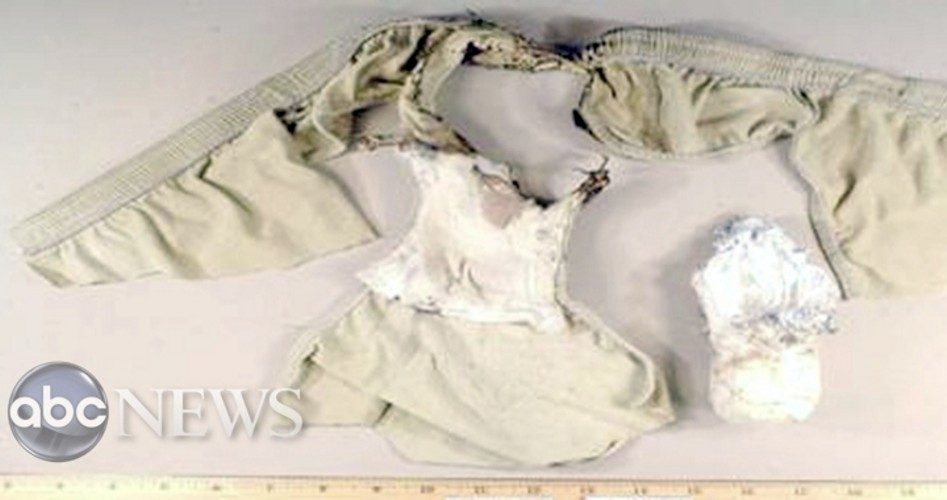
A supposed suicide bomber recruited by al Qaeda to board a U.S.-bound jetliner and blow it up turned out to be a double agent who turned over the bomb and plans to the CIA. According to the New York Times, the would-be bomber tagged by the Yemen branch of Al Qaeda to destroy the airliner was in reality an intelligence operative for Saudi Arabia who had infiltrated the terrorist cell, “volunteering” for the suicide mission.
“In an extraordinary intelligence coup,” reported the Times, “the double agent left Yemen last month, traveling by way of the United Arab Emirates, and delivered both the innovative bomb designed for his aviation attack and inside information on the group’s leaders, locations, methods and plans to the Central Intelligence Agency, Saudi intelligence and allied foreign intelligence agencies.”
The agent, who had spent weeks embedded in one of al Qaeda’s most dangerous affiliates, apparently also provided the CIA with information that enabled the U.S. to launch a drone strike that killed Fahd Mohammed Ahmed al-Quso, a high-ranking al Qaeda director and a prime suspect in the 2000 bombing of the USS Cole in Yemen.
Intelligence officials said that the explosive device intended for the attack was an “underwear bomb” believed to have been designed by al Qaeda’s in-house bomb designer Ibrahim Hassan al-Asiri, whom the Times said most likely also designed the underwear bomb discovered on a passenger, Umar Farouk Abdulmutallab, in the group’s failed attempt on an airliner over Detroit on Christmas Day 2009.
According to the Times, a U.S. intelligence official discussing the most recent thwarted bombing attempt “said the new device was sewn into ‘custom-fit’ underwear and would have been very hard to detect even in a careful pat-down.” The official also said that the device could be detonated in two ways, in case the first method failed.
According to the Associated Press, which first reported the story, while security experts were still examining the bomb to determine new innovations to terrorists attacks, “it appeared that the airport security systems put in place in the United States in recent years could have detected the new device or one like it. But the attempt served as a stark reminder that security overseas is quite different.”
Said U.S. House Intelligence Committee Chairman Mike Rogers (R-Mich.), “I would not expect any real changes for the traveling public,” but “there is a concern that overseas security doesn’t match ours. That’s an ongoing challenge.”
U.S. officials are sometimes stationed in foreign airports to highlight possible security lapses that could enable terrorists to slip through. “In some cases, though, the U.S. can do little more than hope that other countries follow the security advice from the Transportation Security Administration,” noted the AP.
U.S. Representative Adam Schiff (D-Calif.), a member of the House Intelligence Committee, worried that even in the U.S., “even if our technology is good enough to spot it, the technology is still in human hands and we are inherently fallible. And overseas, we have varying degrees of security depending on where the flight originates.”
The Times noted that the latest attack may reflect a new campaign by Al Qaeda directed against the U.S. “Over the past eight months, American counterterrorism officials have monitored with growing alarm a rising number of electronic intercepts and tips from informants suggesting that Al Qaeda’s branch in Yemen has been ramping up plots to attack the United States,” noted the Times. The paper quoted one U.S. official as saying that there is “increasing concern about the chatter, more and more intelligence” that the terrorist group “was moving with renewed energy to carry out some kind of attack against homeland, using airliners and concealed explosives.”
Defense Secretary Leon Panetta said the latest plot makes clear that the U.S. “has to continue to remain vigilant against those who would seek to attack this country.”
Echoed Secretary of State Hillary Clinton: “The device did not appear to pose a threat to the public air service, but the plot itself indicates that these terrorist keep trying to devise more and more perverse and terrible ways to kill innocent people. And it a reminder of how we have to keep vigilant.”
Photo: This undated 2009 file image obtained and provided by ABC News shows underpants with the explosive used on a failed plot to blow up an airliner over Detroit on Christmas Day, Dec. 25, 2009: AP Images


